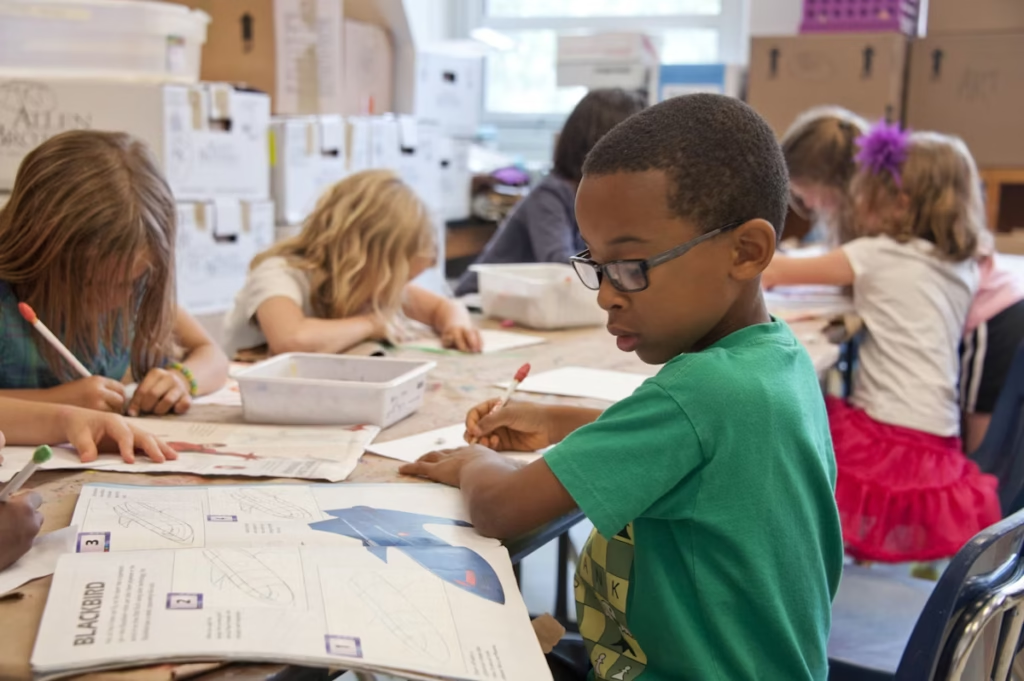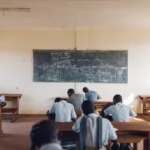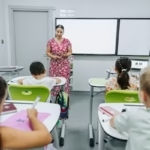Introduction:
Neurodiversity-Inclusive Education Is Critical
One in five students in 2025 will have a neurodivergent condition (such as ADHD, autism, or dyslexia), but 65% of teachers say they have not received enough training to help them (CDC, 2025). According to research 49, students’ academic performance increases by 40% and their social-emotional skills by 58% in classrooms that are inclusive of neurodiversity.
This 2,500+ word manual blends tried-and-true methods with 2025 neuroscience insights to support schools:
- Use eight evidence-based strategies. Make use of innovative EdTech in 2025
- Make IEPs that are truly effective
- Respond to frequently asked questions by parents and educators
- Get free templates and checklists.
1. Universal Design for Learning (UDL): The Gold Standard for 2025
The Reason It Works
- Retention is increased by 72% with multisensory instruction. (Edifying Psychology Journal, 2025)
- Neurodivergent learners experience less anxiety when assessments are flexible.
Implementation Guide for 2025
| Strategy | Example | Tools |
|---|---|---|
| Visual + Auditory Input | Pair lectures with graphic organizers | Canva, MindMeister |
| Kinesthetic Options | Math manipulatives or VR labs | Osmo, Labster VR |
| Choice-Based Assignments | Let students pick essay/video/podcast formats | Flipgrid, Anchor.fm |
2. Support Systems for Executive Functions
Important 2025 Results
- Time management, organisation, and task initiation are common challenges for neurodivergent students 19.
Tested Solutions
- Digital planners: Microsoft or Todoist Concerning colour-coded priorities
- Goblin Tools divides projects into smaller tasks using scaffolded checklists. 8.
- Time management: applications that use the Pomodoro Technique (such as Focus Keeper)
3. Designing a Sensory-Friendly Classroom
Best Practices for 2025
Accommodation for Sensory Needs
Sensitivity to SoundQuiet areas and noise-cancelling headphones
Overwhelming VisualsDimmable lights and areas free of clutter
Needs for MovementStanding desks and wobbling chairs
4. Modifications to Social-Emotional Learning (SEL)
Neurodiversity-Inclusive SEL
- Programs like “Lunch Bunch” foster peer relationships 1.
- Social scripts (such as conversation starters produced by ChatGPT)
- Apps for controlling emotions: Mightier (biofeedback games)
5. Parental cooperation and teacher training
Crucial Competencies for Teachers in 2025
- Acknowledging neurodivergent strengths, such as autism’s ability to recognise patterns
- Preventing “masking” traps: 45% of girls with neurodivergence conceal symptoms 9.
- Using “About Me” letters submitted by parents to co-create IEPs 1
6. 2025 Assistive Technology
The Top 5 Tools
- Google Voice Typing is a free speech-to-text tool.
- NaturalReader is a text-to-speech program that can read PDFs and images. 8.
- Brain.fm (AI-generated focus music) is a focus aid.
- Microsoft OneNote with audio notes for organisation
- AI tutors: ChatGPT-5 for individualised questions and answers
7. Strategies for Peer Support and Anti-Bullying
What Is Effective
- Programs for co-mentoring (as opposed to “helper/helpee” dynamics) 3
- Storytime on neurodiversity using works such as The Boy Who Thought Differently
- Clear channels for reporting bullying (like the StopIt app)
8. Modifications at the Policy Level
Priorities for Advocacy in 2025
- Teens with ADHD should start later because sleep affects concentration.
- Flexibility in grading (lessening spelling and formatting penalties)
- Events at schools that are sensory-friendly (like “quiet proms”)
FAQs
A. Step 2: Provide options → Step 1: Diminish sensory input Step 3: Reflection after the crisis 1.
A. Emphasise communication (e.g., “80% of the time, students will use visual cards to request breaks”). 9.
A. No, according to 2025 studies, when used appropriately, they improve focus by 22%.
A. “Brains are like computers – some run Windows, others macOS!” is an example of an analogy. 8.
Free Resource Kit for 2025
- Checklist for sensory audits
- Template for UDL lesson plans
- Guide for parent-teacher collaboration


